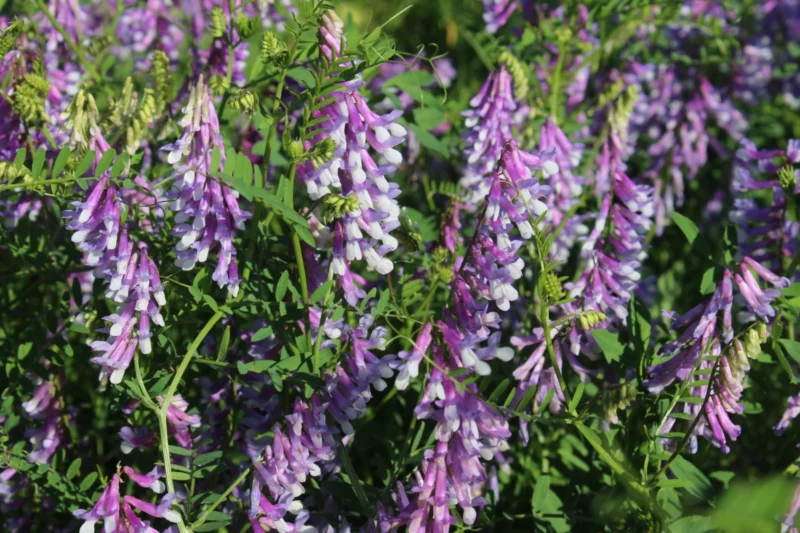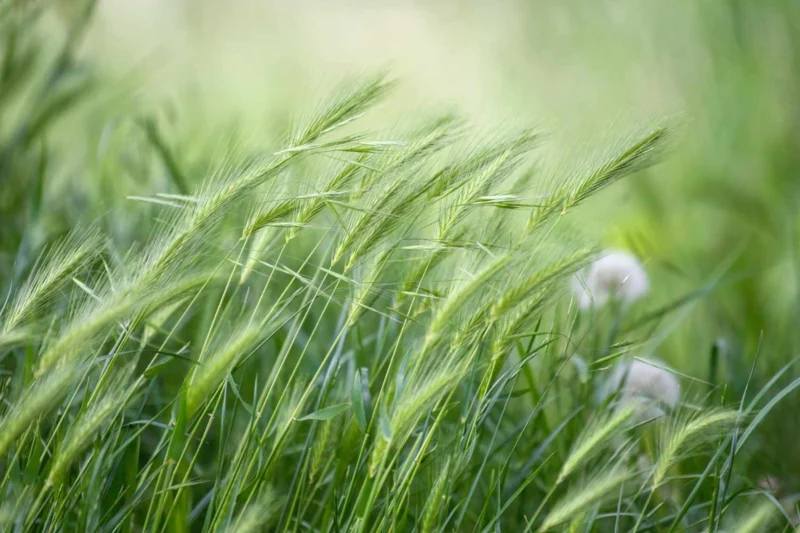Seed Tips
Austrian Winter Peas vs. Other Cover Crops: Which One is Best for Your Farm?
Are you looking for the best cover crop to enrich your soil, suppress weeds, and improve nitrogen levels naturally? If so, you might be wondering whether Austrian Winter Peas (AWP) outperform other cover crops in providing these benefits.
Choosing the right cover crop can make or break your soil’s health. If you’re dealing with depleted soil, nitrogen deficiency, or persistent weeds, the right cover crop can help restore fertility while reducing your dependence on synthetic fertilizers. But is Austrian Winter Peas the best option? Or should you consider alternatives like Crimson Clover, Hairy Vetch, or Winter Rye?
In this guide, I’ll break down the pros and cons of Austrian Winter Peas compared to other popular winter legume cover crops, helping you decide which is best for your farm or garden.
What Are Austrian Winter Peas?
Austrian Winter Peas (Pisum sativum subsp. arvense) are a cold-hardy, nitrogen-fixing legume that farmers and gardeners use as a winter cover crop. Unlike regular peas, these are specifically bred to survive cold temperatures and improve soil conditions.

Key Benefits of Austrian Winter Peas
- Nitrogen Fixation: They can add 50-150 lbs of nitrogen per acre to the soil, reducing the need for synthetic fertilizers.
- Weed Suppression: Their dense growth smothers weeds, helping reduce competition for nutrients.
- Soil Improvement: Their root system enhances soil aeration and water retention.
- Winter Hardy: Can tolerate low temperatures down to 10°F with proper coverage.
- Livestock Forage: An excellent source of high-protein feed for animals.
But how do they compare to other popular winter cover crops?
Austrian Winter Peas vs. Other Cover Crops: A Side-by-Side Comparison
1. Nitrogen Fixation
Why It Matters:
Nitrogen is essential for plant growth, and legumes like Austrian Winter Peas, Crimson Clover, and Hairy Vetch help replenish nitrogen levels naturally.
| Cover Crop | Nitrogen Fixation (lbs/acre) | Best Use Case |
|---|---|---|
| Austrian Winter Peas | 50-150 | Best for low nitrogen soils |
| Crimson Clover | 70-150 | Best for pollinators & nitrogen fixing |
| Hairy Vetch | 90-200 | Best for early spring nitrogen release |
Winner: Hairy Vetch provides the most nitrogen, but Austrian Winter Peas are a great choice for balanced nitrogen release and easy termination.

2. Weed Suppression
Why It Matters:
If weeds are a problem on your farm, a dense cover crop can help suppress them before they become unmanageable.
| Cover Crop | Weed Suppression | Best Use Case |
|---|---|---|
| Austrian Winter Peas | Moderate | Best for weed control with added nitrogen |
| Rye | High | Best for weed suppression & erosion control |
| Crimson Clover | Low | Best for attracting pollinators |
Winner: Winter Rye outperforms Austrian Winter Peas in weed control. However, if you also want nitrogen fixation, AWP offers a solid middle ground.

3. Cold Tolerance
Why It Matters:
If you farm in an area with harsh winters, choosing a cold-hardy cover crop is crucial.
| Cover Crop | Cold Hardiness | Best Use Case |
|---|---|---|
| Austrian Winter Peas | Survives down to 10°F | Best for mild winter regions |
| Winter Rye | Survives below 0°F | Best for harsh winters |
| Hairy Vetch | Survives down to 5°F | Best for early spring nitrogen release |
Winner: Winter Rye is the most winter-hardy, but Austrian Winter Peas work well in moderately cold regions.
4. Cost & Economic Viability
Why It Matters:
Budget-conscious farmers need a cover crop that provides the best return on investment.
| Cover Crop | Seed Cost ($ per acre) | ROI (Return on Investment) |
|---|---|---|
| Austrian Winter Peas | $25-30 | High (fixes nitrogen, feeds livestock) |
| Rye | $12-20 | Very High (cheap, strong weed control) |
| Hairy Vetch | $30-45 | High (high nitrogen fixation) |
Winner: Winter Rye is the cheapest option, but Austrian Winter Peas balance affordability and soil benefits.
How to Grow and Manage Austrian Winter Peas
Best Practices for Planting
Successfully growing Austrian winter peas requires attention to proper planting time, soil conditions, and companion crops.
Sowing Time: Plant Austrian winter peas 6-8 weeks before the first expected frost. This ensures that the plants establish strong roots before winter sets in, increasing their cold tolerance and maximizing nitrogen fixation potential.
Seeding Rate: Use 40-60 pounds of seed per acre for optimal coverage. This rate allows for thick, even growth, reducing weed pressure and providing effective soil protection.
Ideal Soil: Austrian winter peas thrive in well-drained loam or sandy soil with a pH between 6.0 and 7.0. Avoid planting in heavy clay or waterlogged areas, as poor drainage can lead to root rot.

Companion Crops: Plant Austrian winter peas alongside rye or oats for better winter protection. These companion crops provide additional biomass, improve soil organic matter, and offer support for the vining growth of winter peas.
Watering and Maintenance

While Austrian winter peas are relatively low-maintenance, providing adequate moisture during germination and early growth is essential. Keep the soil consistently moist but not waterlogged. If rainfall is insufficient, consider light irrigation to encourage strong root establishment.
To suppress weed growth, monitor the planting area and manually remove competing weeds as needed. If necessary, organic mulch or intercropping with companion cover crops can further reduce weed pressure.
How to Terminate Austrian Winter Peas
Terminating Austrian winter peas at the right time ensures that they provide maximum soil benefits before planting cash crops. Here are the two primary termination methods:
Mowing or Rolling: Before planting your main crops, mow or roll the Austrian winter peas while they are in full bloom. This method helps create a thick mulch layer that retains moisture and suppresses weeds for the next crop.
Tilling Under: Incorporate Austrian winter peas into the soil by tilling them under. This practice adds organic matter, increases soil fertility, and enhances microbial activity. To maximize nitrogen release, allow at least three weeks between incorporation and the planting of cash crops.
Read more:How to Plant Austrian Winter Peas: The Ultimate Guide for a Thriving Cover Crop
Conclusion: Should You Choose Austrian Winter Peas?
Austrian Winter Peas are an excellent choice for farmers looking for a nitrogen-fixing, moderately weed-suppressing, and soil-improving winter cover crop. If you farm in a mild winter region, need to improve soil nitrogen, or want affordable seed costs, AWP is a fantastic option.
However, if weed control or extreme cold hardiness are your top priorities, then Winter Rye may be the better choice. Ultimately, selecting the right cover crop depends on your specific farm conditions and goals.
Frequently Asked Questions (FAQ):
1. Are Austrian Winter Peas better than Crimson Clover for nitrogen fixation?
Crimson Clover also fixes nitrogen but generally provides less total biomass compared to Austrian Winter Peas. AWP can offer more nitrogen back to the soil if allowed to grow to full maturity.
2. Do Austrian Winter Peas survive harsh winters?
They are cold-tolerant but may not survive in extreme frost conditions below 10°F without snow cover or a companion crop like rye for protection.
3. Can Austrian Winter Peas be used as forage for livestock?
Yes! They are excellent for grazing animals due to their high protein content, but should be monitored to avoid excessive consumption leading to bloating.
4. How do I terminate Austrian Winter Peas before planting my main crop?
You can terminate them through mowing, roller crimping, or tilling. No-till methods are preferred for maintaining soil health and reducing erosion.
If you found this guide helpful, share it with other farmers or gardeners looking to improve their soil health!

